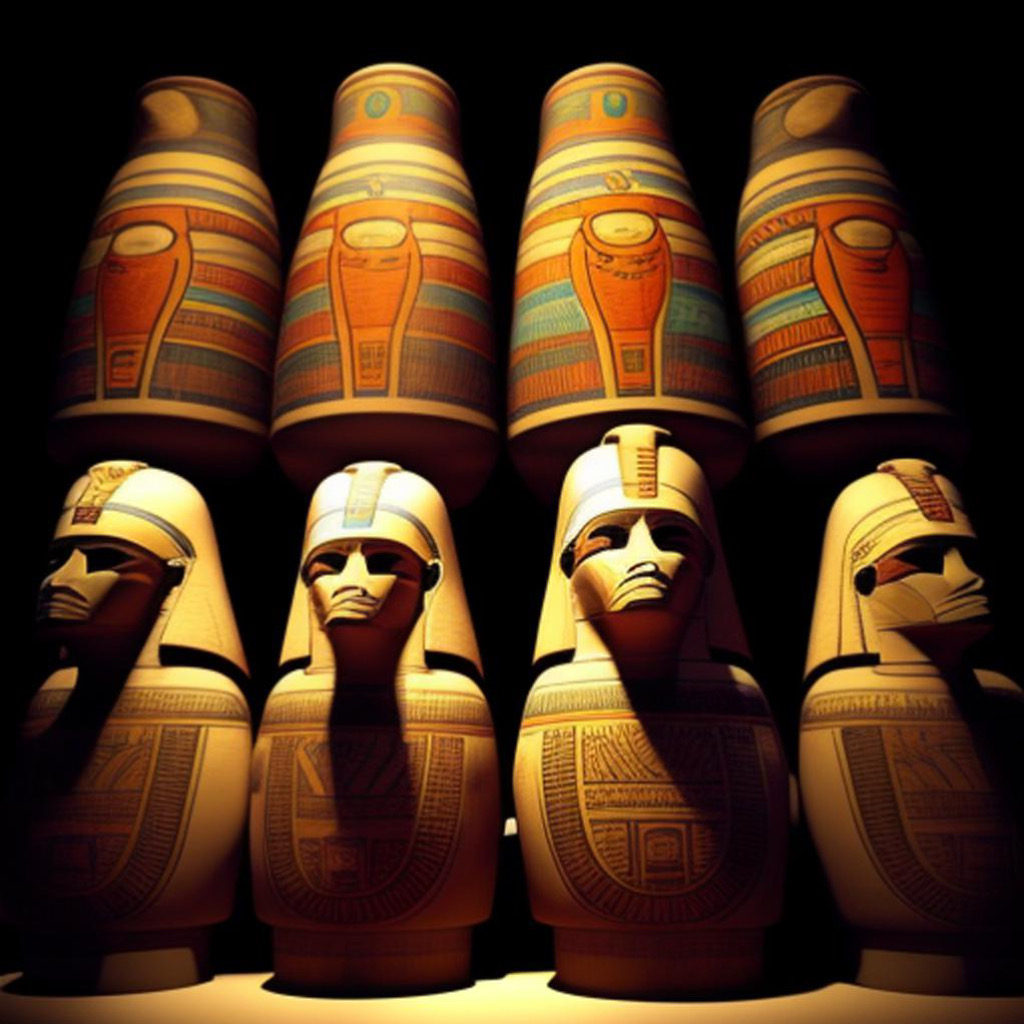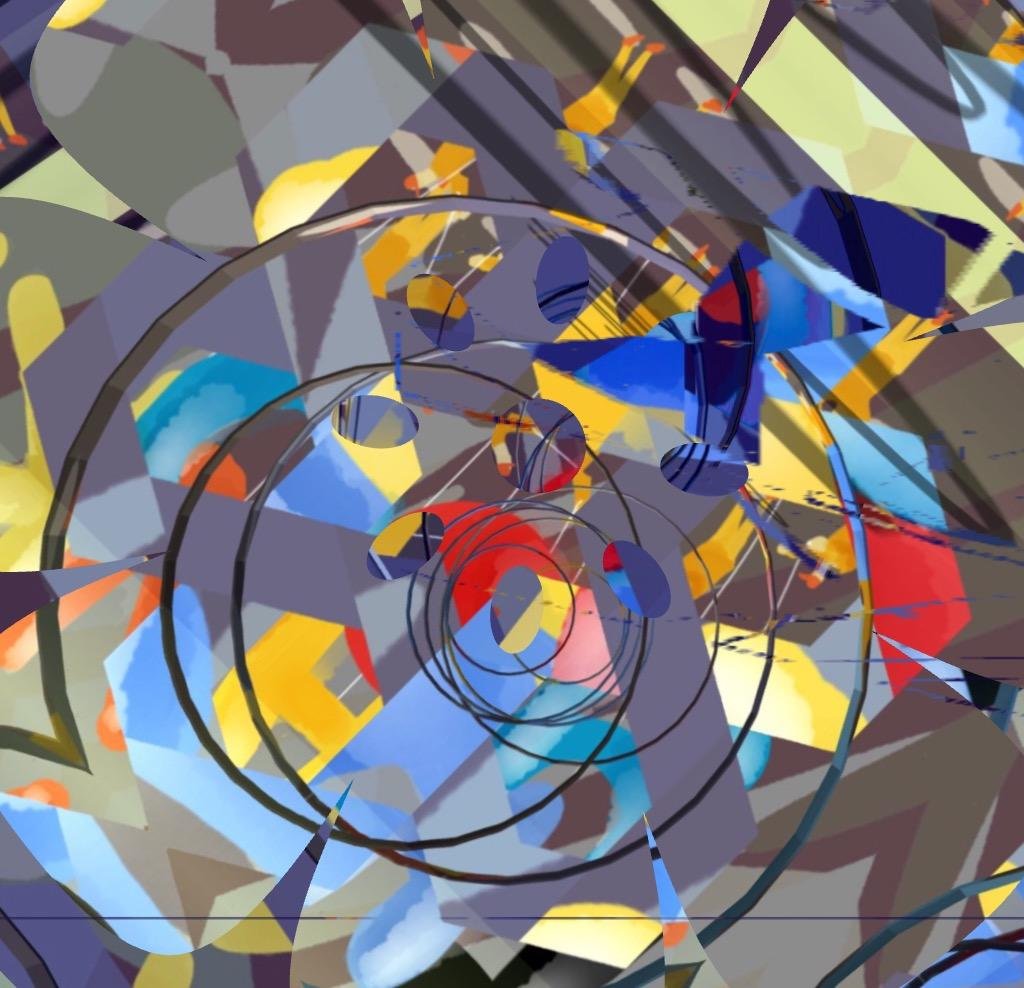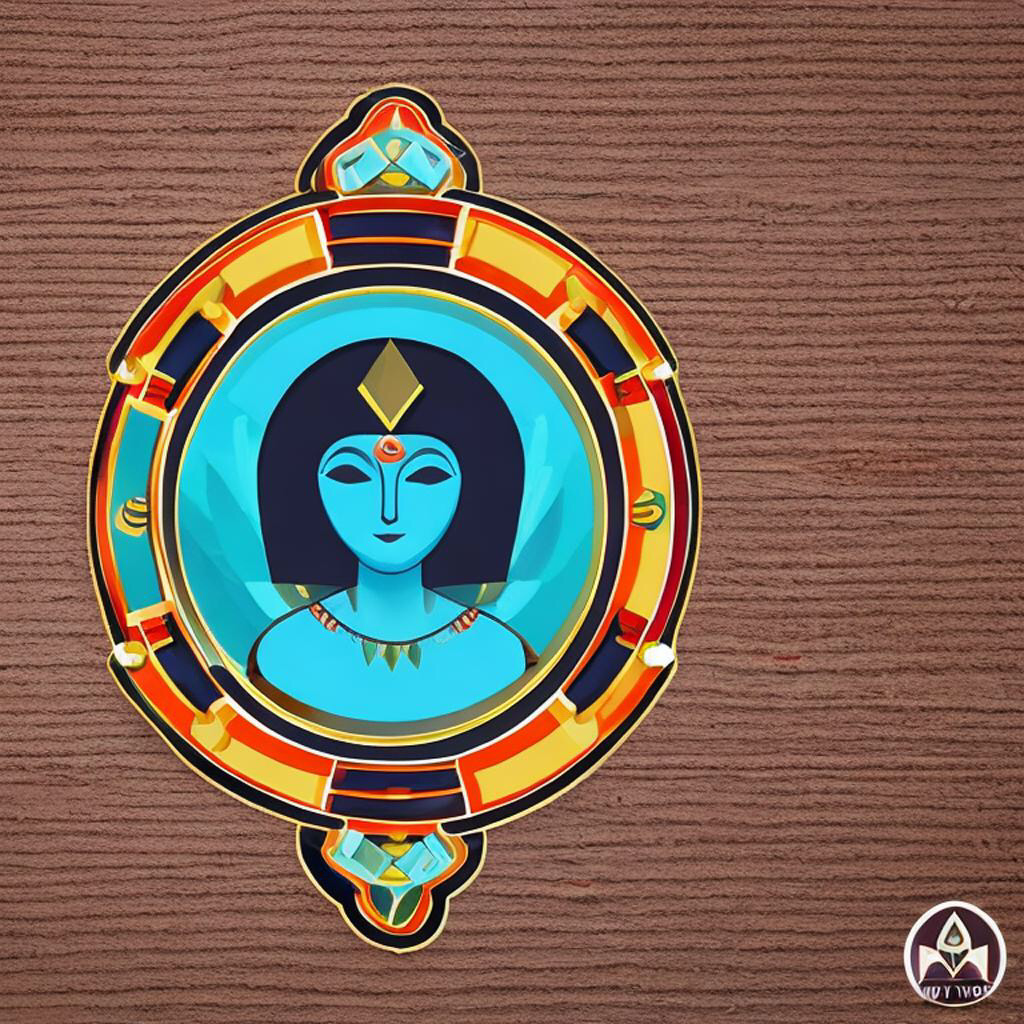
Table of Contents
Guardians of the Departed and Keepers of Inner Vitality in Ancient Egypt
In the storied annals of ancient Egyptian burial practices, where rituals and beliefs intertwine, canopic jars emerge as vessels of profound significance. These ornate containers, with their sacred contents and exquisite craftsmanship, held the keys to an afterlife rich with symbolism and protection. “Canopic Jars: Guardians of the Departed and Keepers of Inner Vitality in Ancient Egypt” unveils the intricate role of these artifacts, as they safeguarded the organs of the deceased and acted as sentinels between realms.
The Essence of Canopic Jars
Canopic jars were more than mere vessels; they were conduits between the living and the afterlife. These elegantly crafted containers were designed to hold the internal organs of the deceased, which were integral for navigating the spiritual realm. Each jar was associated with one of the Four Sons of Horus, divine protectors who guarded these vital organs and guided the departed on their journey to eternity.
Guardians of the Four Sons of Horus
Imsety, Hapy, Duamutef, and Qebehsenuef—the Four Sons of Horus—were the divine entities entrusted with the safeguarding of the internal organs. Imsety, with a human head, protected the liver; Hapy, with a baboon or falcon head, watched over the lungs; Duamutef, with a jackal head, guarded the stomach; and Qebehsenuef, with a falcon head, kept vigil over the intestines. These deities encapsulated both the physical and spiritual aspects of life.
Canopic Jars as Ritual and Symbolism
The mummification process was a sacred dance, where the removal and preservation of organs were pivotal acts. The canopic jars not only held the physical remnants of the deceased but also encapsulated spiritual guardianship. The act of placing the organs in these jars was not just a preservation technique but a ritual that solidified the connection between the deceased and the divine forces that would guide them in the afterlife.
Artistry and Symbolism of Design
The design of canopic jars was meticulous, each reflecting the deity associated with the organ it held. The lids of the jars often bore intricate depictions of the respective deity’s head, symbolizing protection and guardianship. The jars themselves were crafted with care, often featuring ornate carvings, inscriptions, and elaborate details that affirmed their sacred purpose.
Journey into the Afterlife
The significance of canopic jars extended beyond the tomb’s confines. As the deceased embarked on their voyage into the afterlife, the presence of these jars ensured that they were not alone. The protective influence of the Four Sons of Horus guided the soul through the trials and tribulations of the netherworld, allowing them to traverse the treacherous path with the promise of renewal and transformation.
Legacy of Canopic Jars
As beacons of protection and symbolism, canopic jars left an indelible mark on ancient Egyptian culture. Their legacy continues to echo through time, a testament to the Egyptians’ intricate understanding of life, death, and the realms beyond. These artifacts, with their interplay of ritual, artistry, and spirituality, offer a window into the intricate tapestry of beliefs that shaped their civilization.
Conclusion: Guardians of the Threshold
Canopic jars stood as guardians at the threshold between life and the afterlife, embodying both the physical and spiritual aspects of existence. Their role in the mummification process, their association with divine protectors, and their artistry spoke to the Egyptians’ profound reverence for the cycle of life, death, and rebirth. As we explore their intricate designs and symbolic meaning, we unravel the threads that connected the ancient Egyptians to their cosmos, allowing us to glimpse the profound mysteries they held dear.
Table summarizing the Four Sons of Horus, their associated canopic jars, and the organs they protected, along with their symbolic meanings
| Son of Horus | Canopic Jar | Organ Protected | Symbolic Meaning |
| Imsety | Human-headed | Liver | Symbol of benevolence and kindness. |
| jar | Guardian of the north and protector of the liver. | ||
| Hapy | Baboon- or | Lungs | Symbol of fertility, abundance, and inundation. |
| falcon-headed | Protector of the north and lungs. | ||
| jar | |||
| Duamutef | Jackal-headed | Stomach | Symbol of protection and vigilance. |
| jar | Guardian of the east and stomach. | ||
| Qebehsenuef | Falcon-headed | Intestines | Symbol of regeneration and transformation. |
| jar | Guardian of the west and intestines. |
Each of the Four Sons of Horus, depicted on the lids of their respective canopic jars, held a specific role in protecting and preserving the organs needed by the deceased in the afterlife. Their symbolism was deeply rooted in ancient Egyptian beliefs and mythology, reflecting their roles as guardians and guides in the spiritual journey beyond death.
Shop tip
Video
Thank you for your visit! Enjoy the reading!
Sources openai Language models, aitrot, picsart and mib
Take time to learn
Invest in your future
Embark on a journey into the realm of affiliate marketing and craft your own website within a vibrant, supportive community. Join me in this adventure, where you can begin as a free starter and stay as long as you desire. Enjoy complimentary hosting and foundational teachings to set you on your path. For those with advanced skills, opportunities to elevate your expertise await. Take a moment to explore and witness the magic for yourself!




